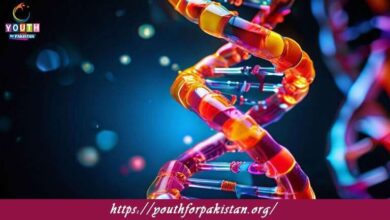10th Class Biology Chapter 10 Quiz with Answers

“10th Class Biology Chapter 10 Quiz: Gaseous Exchange” is one of the most important chapters, as it deals with the physiological process by which organisms exchange gases, mainly oxygen and carbon dioxide, with the environment. This topic is especially important for MDCAT students because it lays the foundation for understanding respiratory systems, a very important area in medical and dental studies. Our MDCAT Quiz for this chapter will help to strengthen the understanding of gaseous exchange mechanisms and their applications in biological systems.
The chapter opens by introducing the concept of gaseous exchange and how it occurs through diffusion across respiratory surfaces. Students learn about what makes certain structures ideal for gas exchange, including thin membranes, moist surfaces, and large surface area. This process is described in detail for different organisms, including humans, where gaseous exchange takes place in the alveoli of the lungs. In addition, the structure of gills in fish and stomata in plants, which carry out gaseous exchange in those organisms, is described. Students will learn about the role of haemoglobin in the transport of oxygen in the blood and the movement of gases by partial pressures. The chapter ends with factors influencing gaseous exchange, including temperature, surface area, and concentration gradients.
MDCAT Quiz: Challenge Your Understanding of Gaseous Exchange
Our MDCAT Quiz for Chapter 10 provides a series of questions designed to test your knowledge of gaseous exchange mechanisms, the anatomy of respiratory systems, and the role of gases in maintaining homeostasis. This quiz is an excellent way to prepare for the MDCAT exam, ensuring that you are well-versed in all aspects of gaseous exchange.
- Test Name: 10th Class Biology Chapter 10 Quiz
- Type: Quiz Test
- Total Questions: 30
- Total Marks: 30
- Time: 30 minutes
Note: Answer of the questions will change randomly each time you start the test, once you are finished, click the View Results button.
Free Flashcards for Gaseous Exchange
Revise effectively with free flashcards for Chapter 10. These flashcards cover critical concepts like diffusion, hemoglobin, alveolar structure, and respiratory adaptations in various organisms. Flashcards offer a fast and efficient way to memorize important facts and details, making them a powerful tool for MDCAT exam preparation.

What is the term for the total volume of air that can be forcefully exhaled after a maximal inspiration?

What is the term for the amount of air that can be forcibly expelled after a normal tidal volume expiration?
Experience the real exam environment with our expertly designed collection of over 25,000 MCQs MDCAT Mock Tests.





